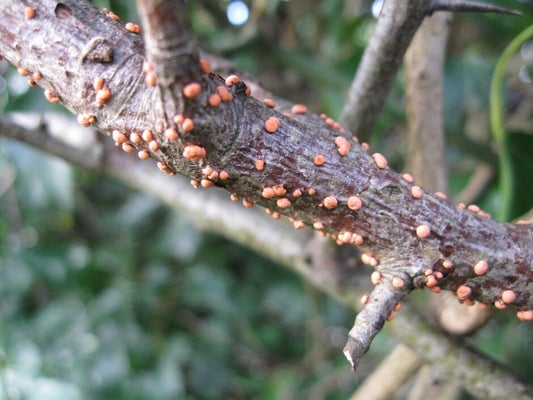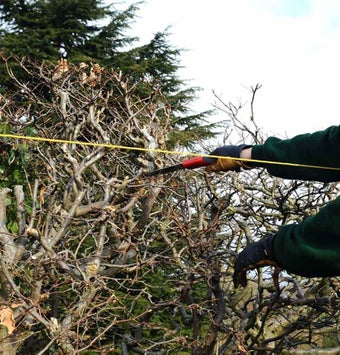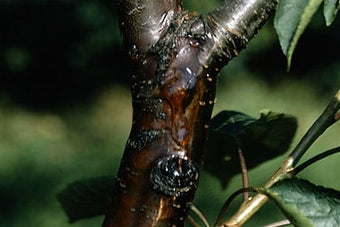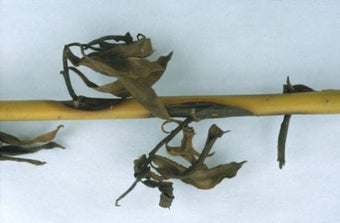
Quick facts
Common name - Coral spot
Scientific name - Nectria cinnabarina
Plants affected - Many woody plants
Main symptoms - Branch die-back, followed by small orange or coral-pink fungal pustules
Caused by - Fungus
Timing - Throughout the year
What is coral spot?
Coral spot, so-called because after affected branches die they develop pinhead-sized orange or coral-pink spore pustules, is a disease caused by the fungus Nectria cinnabarina. It causes die-back of the branches of woody plants, but the causal fungus is a weak pathogen and its presence often indicates that the plant also has other problems.
Among broadleaf trees and shrubs, Acer (maple), Aesculus (horse chestnut), Carpinus (hornbeam), Fagus (beech), Juglans (walnut) and Tilia (lime) are among the more susceptible to attack. It is rarely found on conifers.
The small orange or coral-pink fungal pustules may be seen at all times of year.
Symptoms
You may see the following symptoms:
- Die-back of branches, often those that have been broken or pruned further up
- After death, pinhead-sized orange or coral-pink spore pustules of the causal fungus appear on the
- Clusters of small, reddish spore cases (containing a second spore type) may also sometimes be seen

Control
The RHS believes that avoiding pests, diseases and weeds by good practice in cultivation methods, selection, and encouraging or introducing natural enemies, should be the first line of control. If chemical controls are used, they should be used only in a minimal and highly targeted manner.
Non-chemical control
Always prune in dry weather. When carrying out routine pruning, cut branches through the collar (ring of slight swelling found at the base of branches). Healing of wounds occurs most quickly here, compared to leaving stubs (snags) or cutting flush with the bough or trunk. If die-back occurs after pruning, remove dead material to avoid further infection.
Prune out infections promptly and cut back to healthy wood. Do not leave dead wood to moulder and generate spores in damp corners of the garden.
If a plant is attacked repeatedly, check for other stress factors that could be weakening it and alleviate these if possible.
Chemical control
There are no specific fungicidal controls for this disease.
If it is necessary to prune in wet weather when risks of infection are high, or if the plant has previously shown a particular susceptibility to the problem, use a wound paint (Vitax Medo, Provanto Arbrex Seal and Heal, Growing Success Prune and Seal) to protect the cut.
However, wound paints are not recommended for routine use as they are thought to interfere with healing and may even provide a better environment for rots.
Biology
The causal fungus is found very commonly growing as a saprophyte(a term describing a fungus that feeds on dead organic material) on dead wood, especially old hazel peasticks and plant supports. Spores (conidia) from the orange or coral-pink pustules on the are dispersed in rain splash and wind-blown rain. A second spore type (ascospores) can also be produced, from tiny reddish spore cases (perithecia) that often form in clusters. Either spore type can be present at any time of year.
Spores can infect trees and shrubs in a number of ways:
- By colonising dead branch stubs, areas of dead bark or young tissues killed by spring frost
- Through lenticels (air pores) in living bark if the tree is stressed for other reasons
Although dead wood is colonised initially the fungus can then spread into the adjacent living wood to cause die-back. After death, the fungus grows out of the dead bark to form the characteristic small pink pustules that produce the spores.









